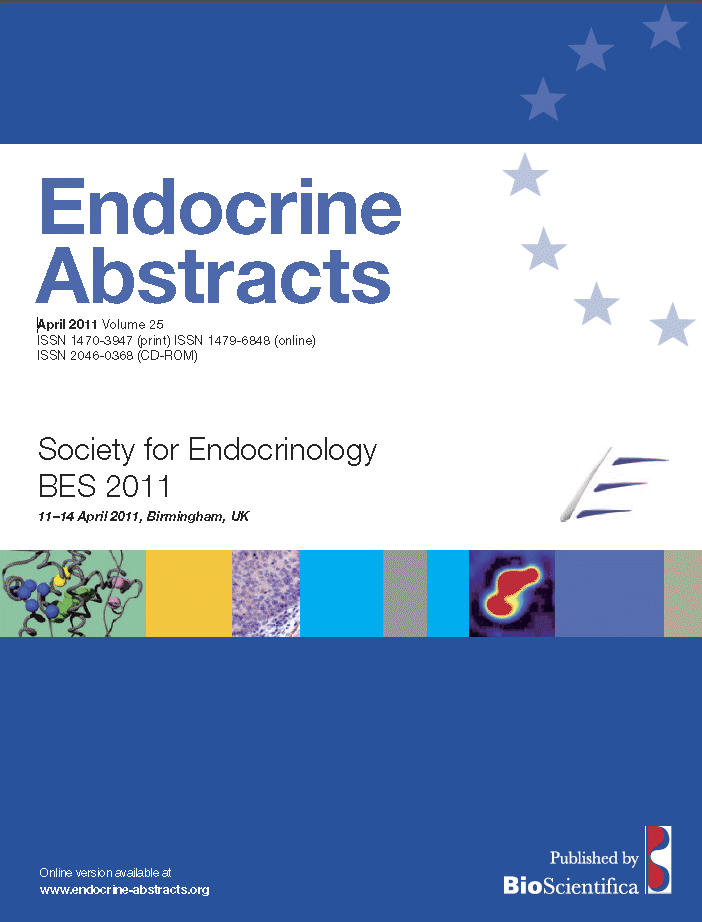Searchable abstracts of presentations at key conferences in endocrinology
Symposia
The novel role of primary cilia in endocrine disease and obesity
ea0025s5.1 | The novel role of primary cilia in endocrine disease and obesity | SFEBES2011
Making sense: primary cilia in disease and development
Ubiquitous in nature, cilia and flagella comprise near identical structures with similar functions. The most obvious example of the latter is motility; driving movement of the organism or particle flow across the epithelial surface in fixed structures. In vertebrates, such motile cilia are evident in the respiratory epithelia, ependyma and oviducts. For over a century, non-motile cilia have been observed on the surface of most vertebrate cells but until recently their function...
ea0025s5.2 | The novel role of primary cilia in endocrine disease and obesity | SFEBES2011
Sonic hedgehog signalling and primary cilia in the adrenal
Cogger Katy , Guasti Leo , Banu Zahida , Beales Phil , Paul Alex , Laufer Ed , King Peter
The adrenogonadal primordium develops from a thickening of the coelomic epithelium covering the urogenital ridge. After segregation of the primordium into the bipotential gonad and the adrenocortical primordium, the cortex is encapsulated by mesenchymal cells and infiltrated by migrating sympathoadrenal cells, which form the medulla. We have shown that the cell fate regulator sonic hedgehog (Shh) is not required for the formation of the adrenocortical primordium but is require...
ea0025s5.3 | The novel role of primary cilia in endocrine disease and obesity | SFEBES2011
The importance of primary cilium in adipogenic differentiation
Long considered as a vestige of evolution, the primary cilium has recently emerged as a crucial orgnalle in the regulation of cell function. Ciliated cells are ubiquitously present in the organism and until recently only two cellular types were considered as unciliated cells, namely the adipocyte and the hepatocyte. An in vitro approach evidenced that the preadipocyte was transiently ciliated during its terminal differentiation phase and that the primary cilium was acti...
ea0025s5.4 | The novel role of primary cilia in endocrine disease and obesity | SFEBES2011
The molecular pathophysiology of the human obesity disorder, Bardet Biedl syndrome (BBS)
Bardet-Biedl syndrome (BBS) is a heterogeneous autosomal recessive disorder characterized by obesity, retinopathy, cognitive abnormalities, and polydactyly and other congenital anomalies. Patients also have an increased incidence of hypertension and diabetes. Mutations in at least 14 genes have been reported to independently cause BBS. In order to better understand the pathophysiology of BBS, we have generated BBS mouse models and have investigated the interaction of the prote...




